
Print of photo featuring a Spotted Eagle Ray in the deep blue
The spotted eagle ray complex is listed as NEAR THREATENED by the IUCN. However, this is based on the incorrect assessment that Aetobatus narinari is a globally occurring species. The revised distribution is far more limited (see Distribution above). The Western Atlantic population probably faces a considerably lower threat level.

IZE BELIZE International Zoological Expeditions, Inc. Marine animals, Ocean creatures, Sea
Where do Spotted Eagle Rays live? Spotted eagle rays can be found around the world in tropical waters. The Atlantic population is considered to be the true spotted eagle ray, Aetobatus narinari.In the Atlantic, these animals can be found in the Caribbean from the southeast coast of the USA to Brazil, and along the African coast from Cabo Verde to Namibia.

Spotted Eagle Ray, San Cristobal Island, Galapagos Photograph by Tui De Roy /
The spotted eagle ray (Aetobatus narinari) is a cartilaginous fish belonging to the eagle ray family of stingrays.Its common name comes from its distinctive spots, fins that flap like wings, and protruding snout that resembles an eagle's beak or duck's bill. Usually, the ray is a solitary predator, but it sometimes swims in large groups.
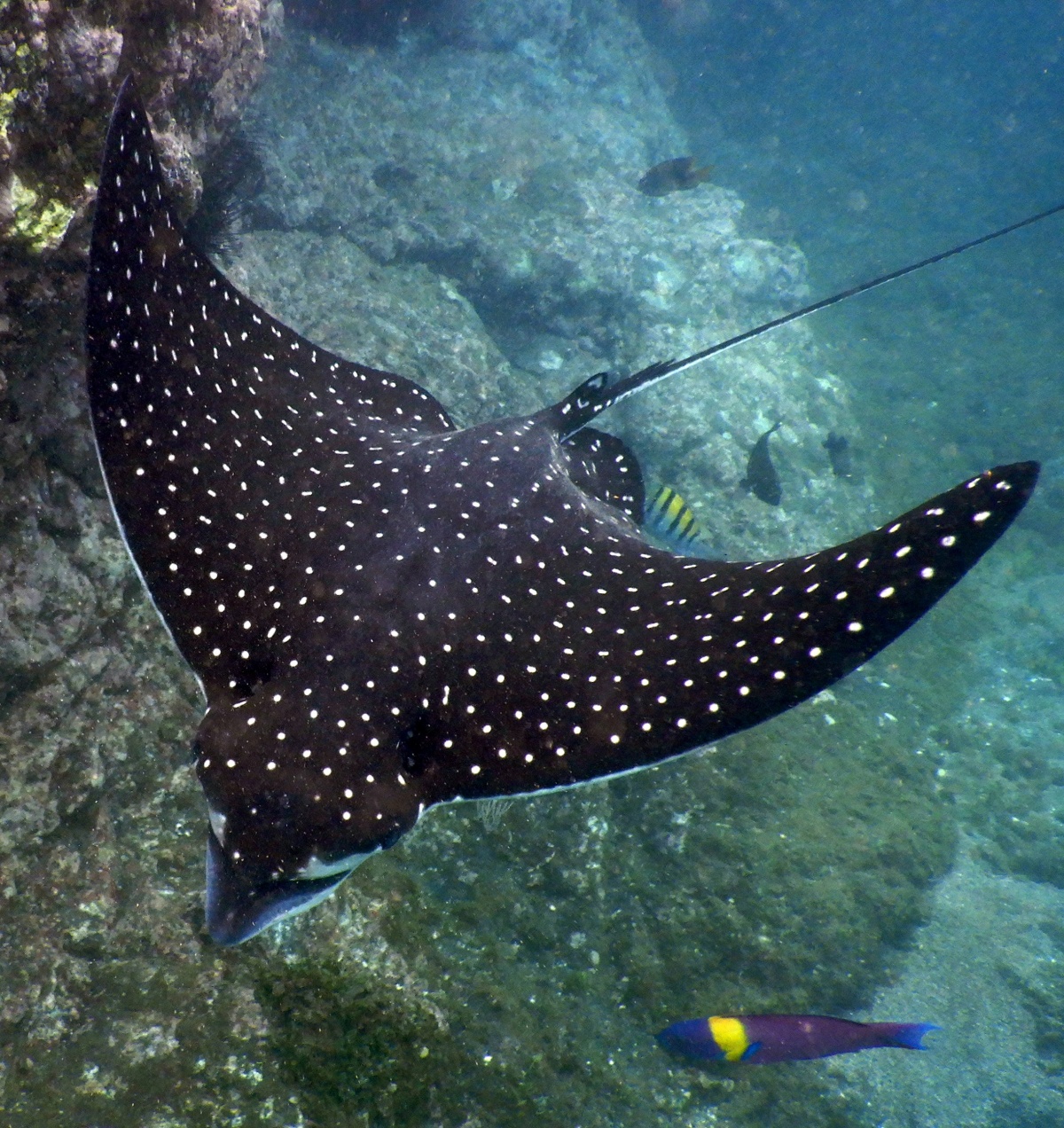
7Foot Long, 400Pound Spotted Eagle Ray Unexpectedly Leaps Into A Boat, Gives Birth to 4 Pups
The Hawaiian spotted eagle ray is also known as the bonnet ray, duck bill ray, or spotted duck billed ray, but perhaps no other name than hihimanu describes them so perfectly. This Hawaiian name means "magnificent" or "elegant bird." With the grace of an eagle, this cartilaginous fish can be found gliding in shallow coastal waters.
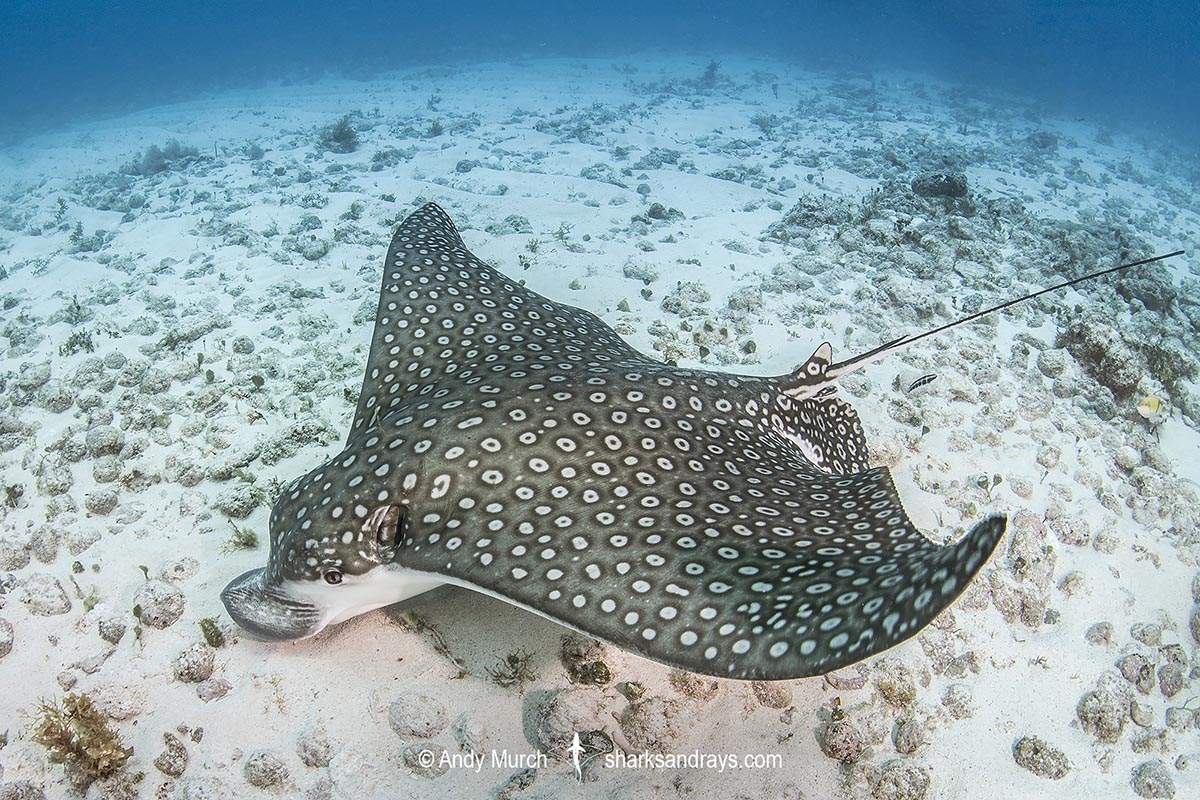
Spotted Eagle Ray 006 Sharks and Rays
The spotted eagle ray is a majestic ray species. The spotted eagle ray, also known as Aetobatus narinari, is a remarkable ray species that belongs to the Myliobatidae family. With its distinctive spotted pattern and graceful movements, it is a fascinating creature to observe in the ocean.
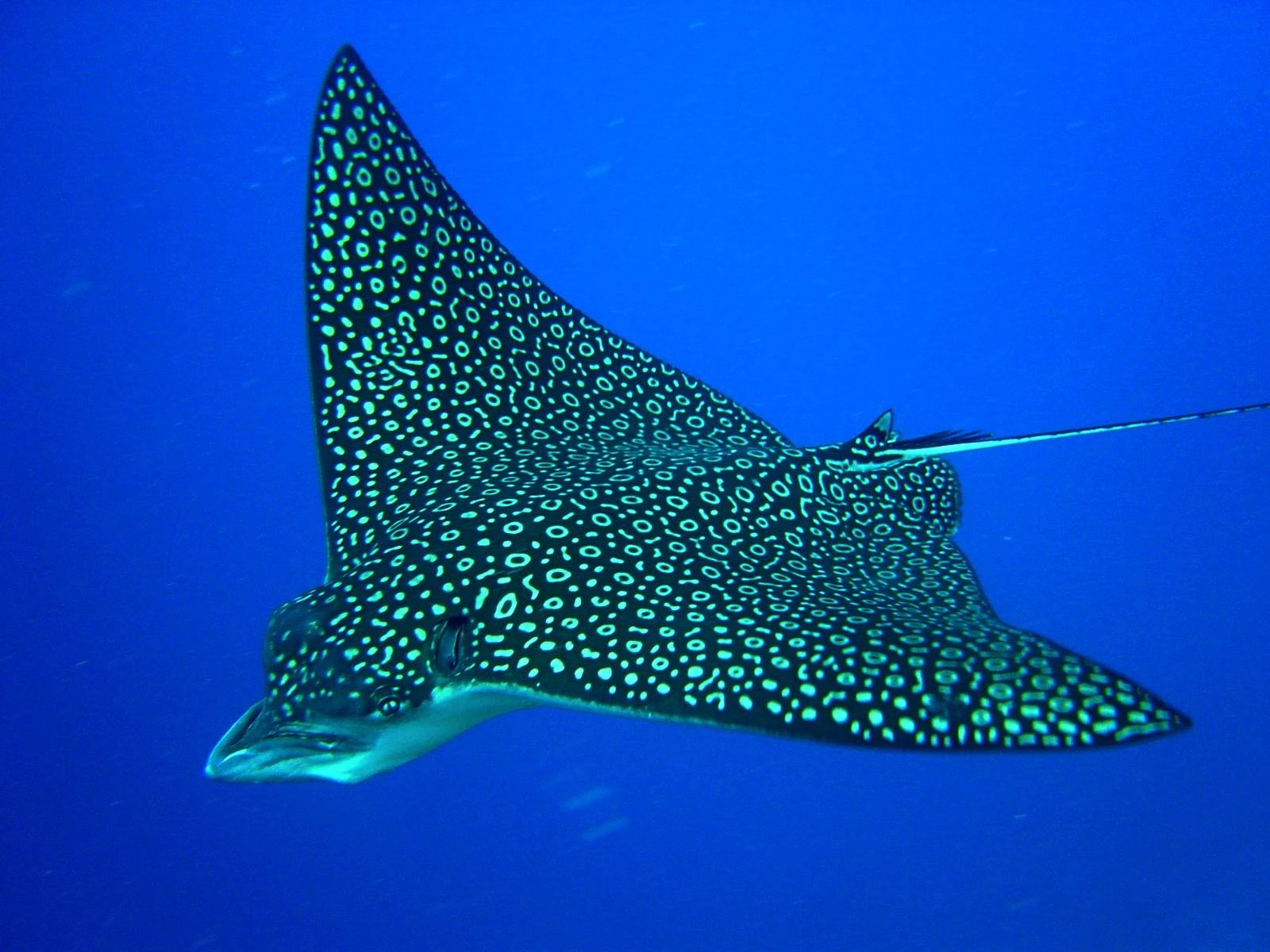
Spotted eagle ray Beast Wars Transformers Wiki FANDOM powered by Wikia
The spotted eagle ray (Aetobatus narinari) is a cartilaginous fish of the eagle ray family, Aetobatidae. As traditionally recognized, it is found globally in tropical regions, including the Atlantic, Pacific and Indian Oceans.Recent authorities have restricted it to the Atlantic (including the Caribbean and Gulf of Mexico) with other populations recognized as the ocellated eagle ray (A.

The Most Unusual Creatures Found On The Galapagos Islands
The spotted eagle ray has a flattened body with a diamond-shaped disc and a long, whip-like tail. Its body is covered in small, tooth-like scales called dermal denticles. These rays are typically brown or gray with white spots on their backs and a white underbelly. The spotted eagle ray is classified under the following taxonomic hierarchy:
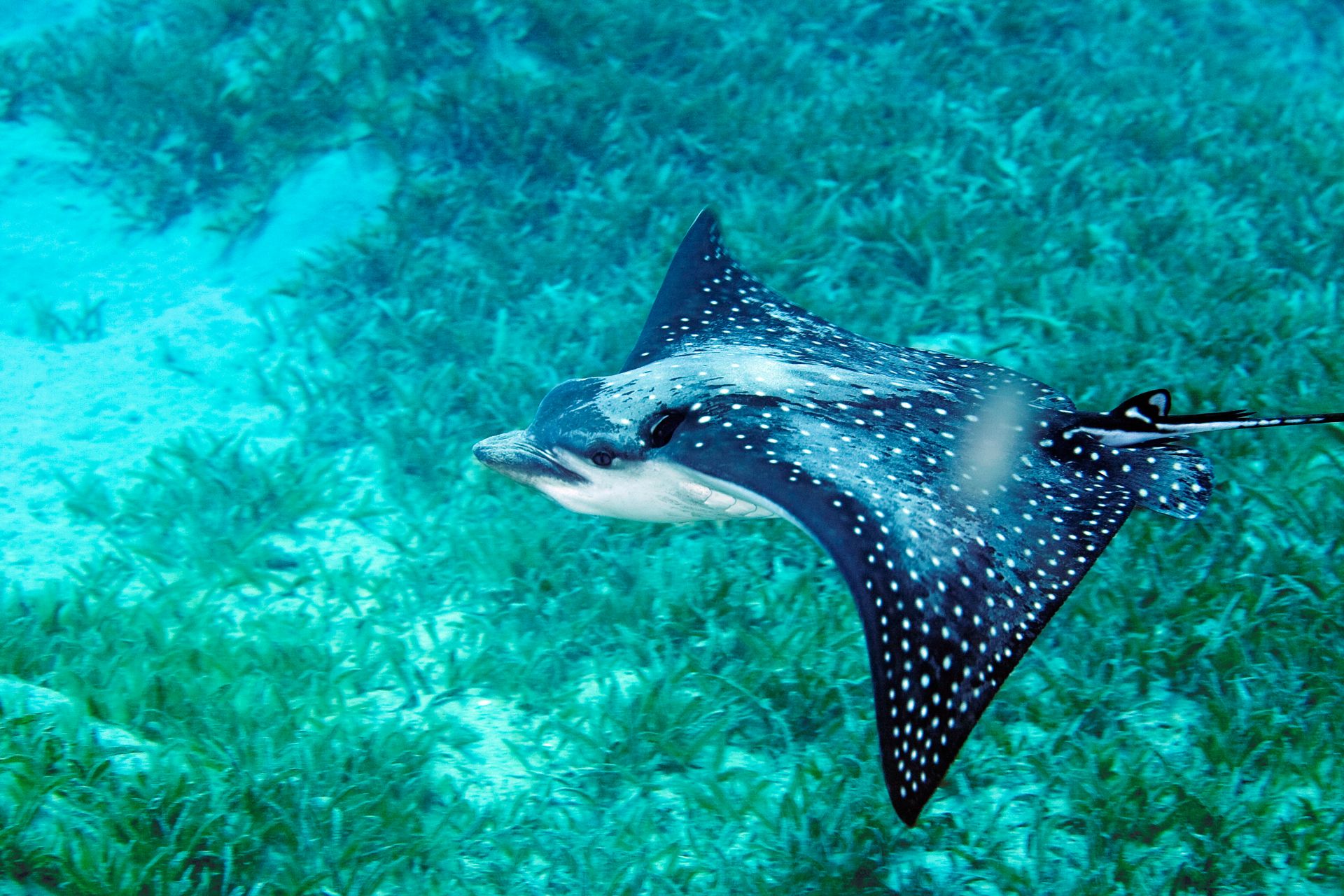
Spotted Eagle Ray Facts Ray Species DK Find Out
Thankfully the spotted eagle ray is not yet considered endangered, and people in some areas are working to make sure this status remains. In Bermuda, in 2010, the spotted eagle ray was listed under the Bermuda Protected Species Act 2003. Anyone convicted of catching and/or killing an eagle ray will be fined and face prison time.
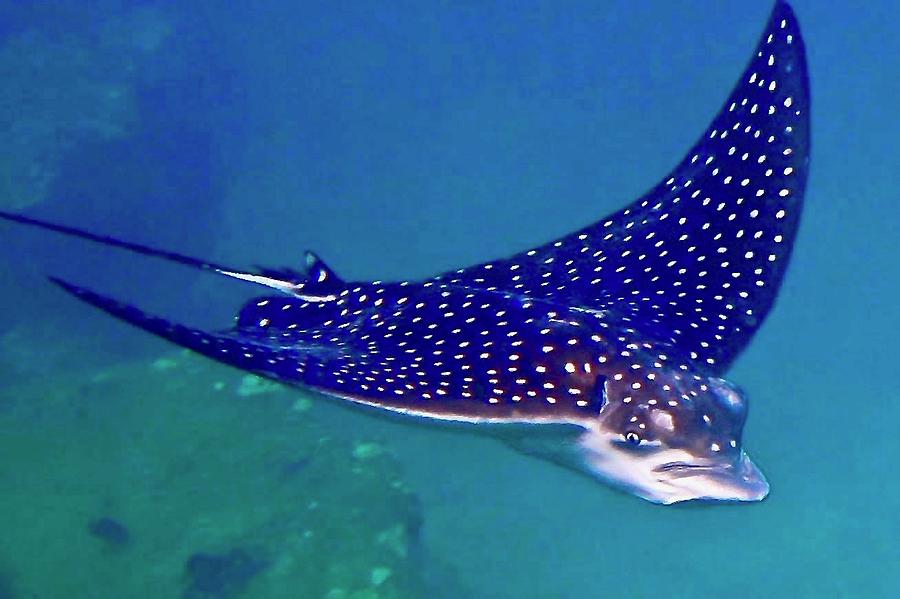
Spotted Eagle Ray Photograph by Kirchgessner Fine Art America
The spotted eagle ray develops ovoviviparously; the eggs are retained in the female and hatch internally, feeding off a yolk sac until live birth. After a gestation period of one year the mother ray will give birth to a maximum of four pups. When the pups are first born, their discs measure from 170-350 millimeters (6.7-13.8 in) across..
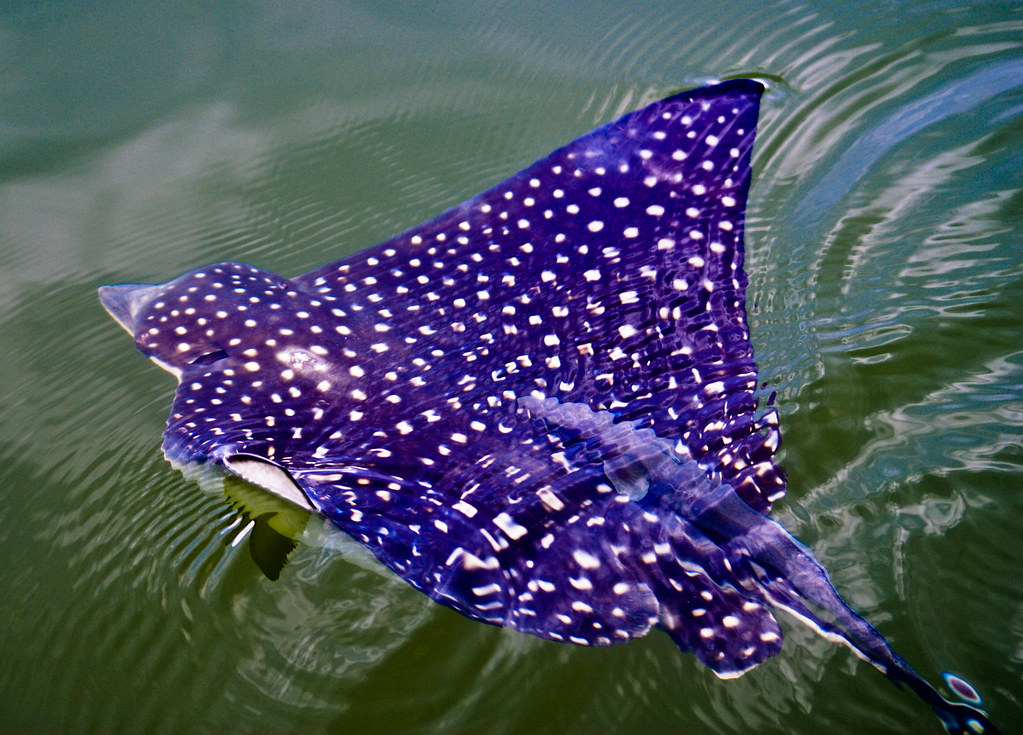
Spotted Eagle Ray spotted eagle ray in Florida Rob Moffitt Flickr
The spotted eagle ray is a popular display aquarium specimen and is often seen in public aquaria facilities. Danger to Humans. Generally a shy species, spotted eagle rays are wary of divers and are difficult to approach. However, it is considered potentially dangerous to humans due to the venomous tail spines that can inflict serious wounds.
Spotted Eagle Ray got pretty close to us in Bonaire r/scuba
Reaching nearly 11 feet long, the spotted eagle ray is one of the largest eagle rays, with only the mantas growing bigger. Spotted eagle rays, like all eagle.

Spotted Eagle Ray Mexico Fish, Marine Life, Birds and Terrestrial Life
Crunch Time - Like other stingray species, eagle rays have flat plates rather than typical teeth. They use these plates to crush crustaceans like crabs, clams, shrimp, and more. Shovel Nose - Some species, like spotted eagle rays, will use their flattened snouts to dig in sand or mud. Oftentimes their prey is buried in the sand, and this.

Real Monstrosities Spotted Eagle Ray
Spotted eagle rays grow to a maximum length of 16.4 feet (5 m), including the tail, and 507 pounds (230 kg). Their wingspan reaches a maximum width of 9.8 feet (3 m) from tip to tip. 2. Spotted eagle rays can be found from the surface to just over 196 feet (60 m) deep. 3. Spotted eagle rays can leap their entire bodies out of the water while.
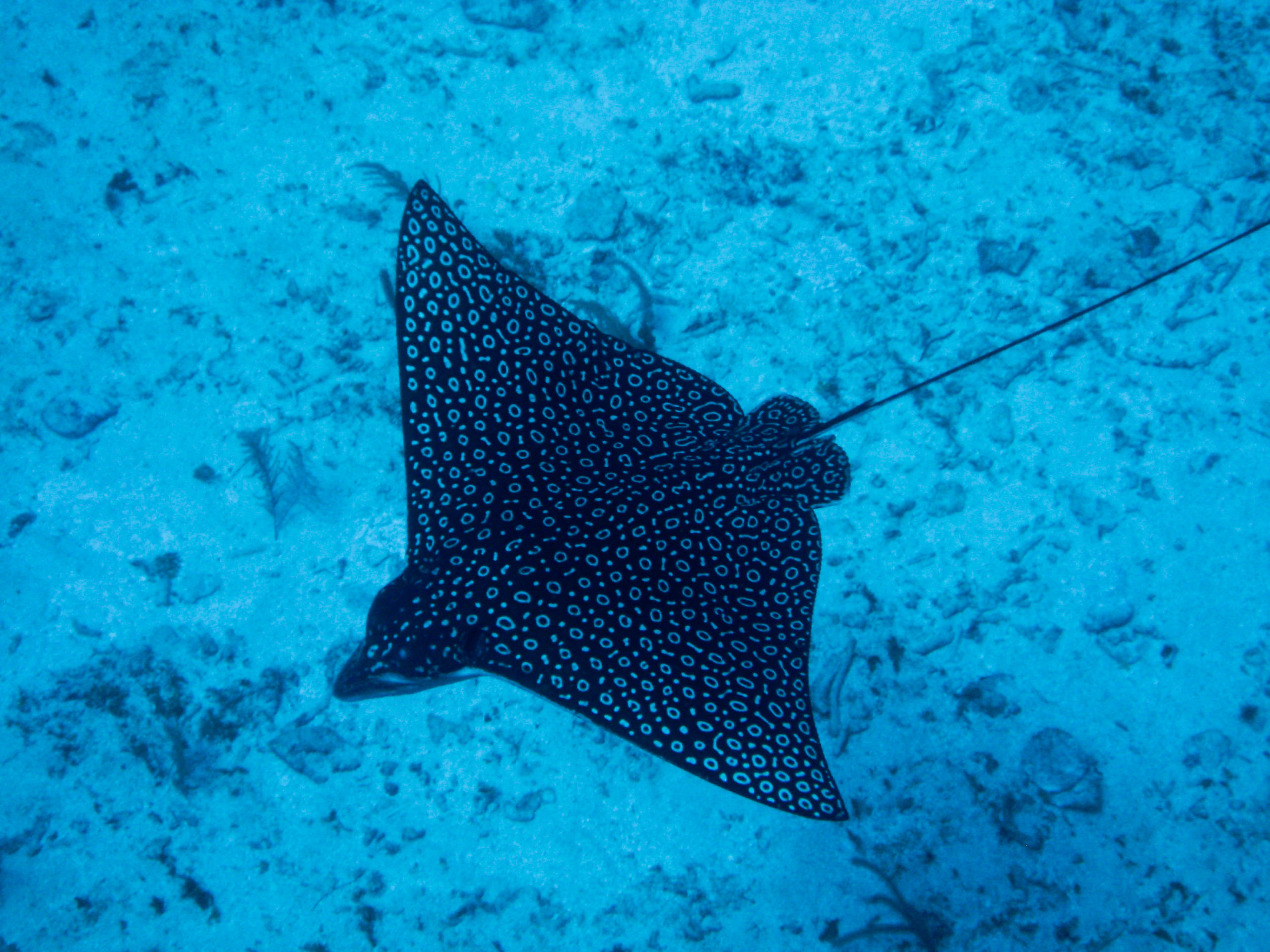
Sea Wonder Spotted Eagle Ray National Marine Sanctuary Foundation
Adult spotted eagle rays can reach a width of 10.8 feet (3.3 m) and a total length of 16.4 feet (5 m) with an undamaged tail. Can reach a maximum weight of 507 lbs. (230 kg). Its body, or disc, is very angular and thick, with a broad snout that is flat and rounded like a duck's bill. There are large spiracles located directly behind the eye.
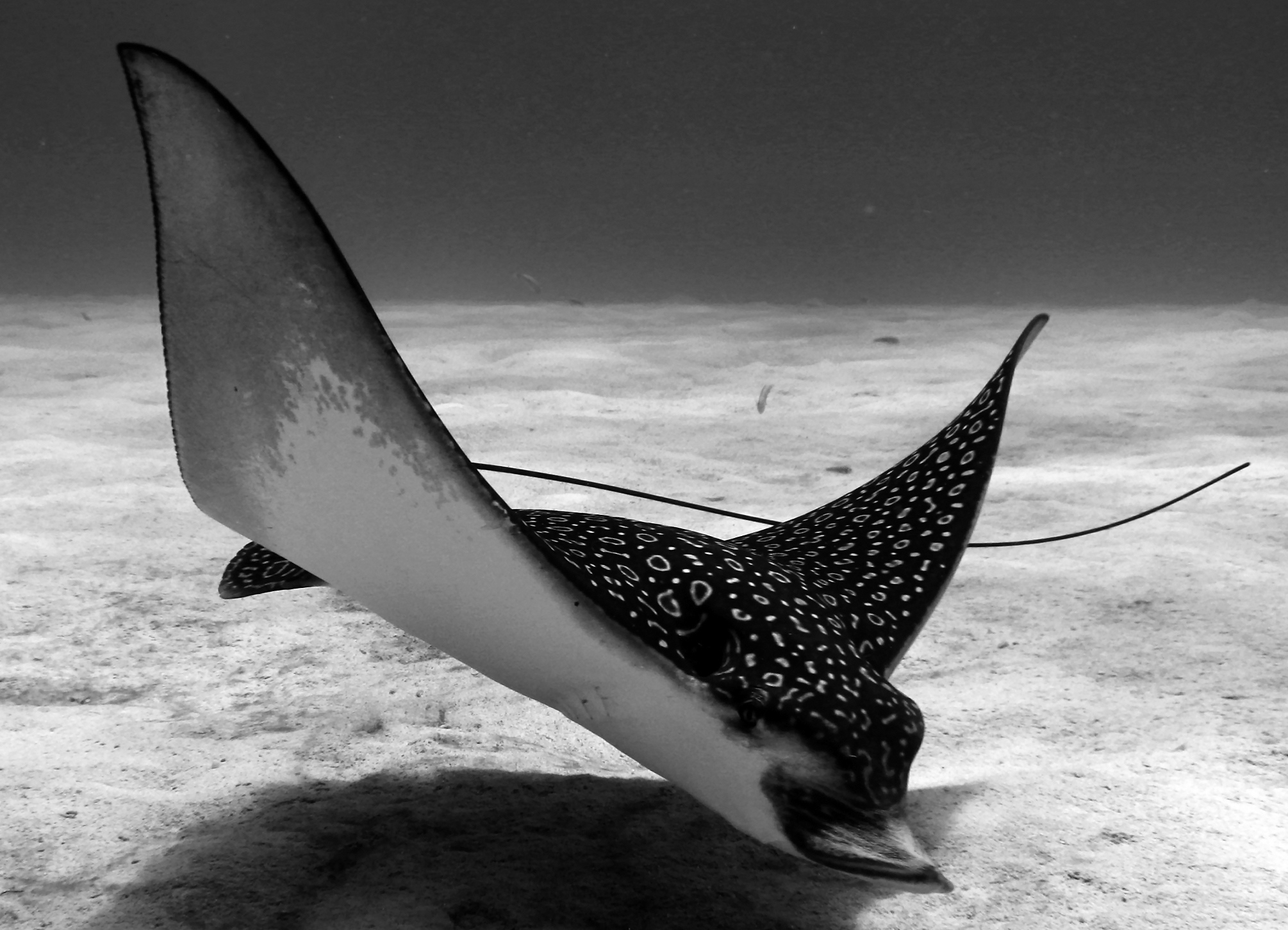
Spotted Eagle Ray Facts, Characteristics, Habitat and More Animal Place
Spotted eagle rays are often observed cruising close to the surface. They are also known to "porpoise" - or leap - out of the water. As with other ray species, spotted eagle rays possess flat plates of teeth which are used to crush the hardened shells of preys items such as bivalves and crustaceans.

Spotted Eagle Ray 1 Photograph by Kirchgessner Pixels
Take a closer look at the Spotted Eagle Rays who thrive in the Galapagos environment. Informative clip from the BBC Natural history series Galapagos, which e.